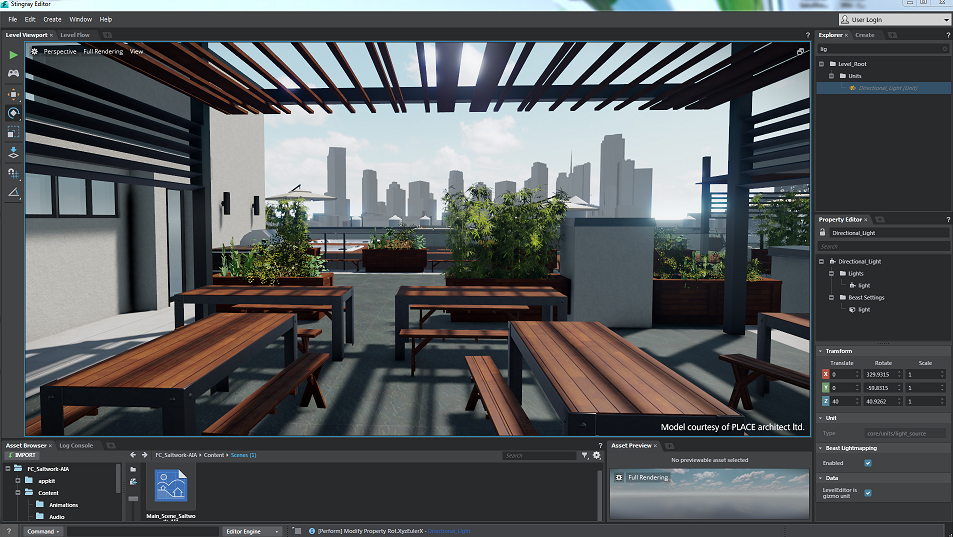Autodesk is getting out of the game-engine business. The company will shutter its Stingray product, with sales and development ending on January 7th, 2018.
Stingray was developed out of technology Autodesk acquired with their purchase of the Bitsquid game engine in 2014. By August 2015, that engine had developed into Autodesk’s own product, Stingray. In addition to using the game engine for its original purpose (making video games), Autodesk developed Stingray into a compelling option for users who wanted to convert Revit models into interactive 3D experiences, including VR, with a minimum of effort.
According to Autodesk, Stingray has proven to be redundant. “Our customers are increasingly standardizing on two game engines, Unity and Unreal Engine for both games and VR/AR authoring,” reads an official FAQ on Stingray’s end of life. “Both engines have built extensive content and resource ecosystems for developers to leverage. We feel we can better serve our customers by working more closely with Unity and Unreal Engine rather than trying to develop our own alternative.”
If you’ve been paying close attention to Autodesk game engine news, the move won’t surprise you. Unity, for instance, had a huge presence at AU 2017. In addition, the two companies announced a collaboration in October that handed Autodesk SDK access to Unity. This partnership, the two companies say, gives Unity the means to develop “a streamlined process for asset sharing and in-game iteration that greatly improves the capabilities of artists working in Unity, Autodesk 3ds Max, and Autodesk Maya.”
Given the increasing popularity of interactive 3D visualization in AEC, and Autodesk’s general commitment to design visualization, we can safely assume that Revit integration is on the way as well.
Any Stingray users who want to continue using the application will need to purchase Maya LT, or subscribe to 3ds Max to access the 3ds Max Interactive feature in the 2018 release. Note, however, that this does not mean the product will continue to be developed.
For more information, see Autodesk’s FAQ. (As of Monday, December 18th, the link is broken).






